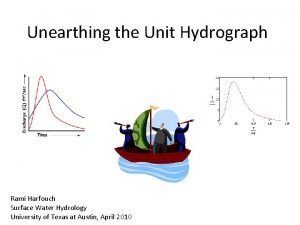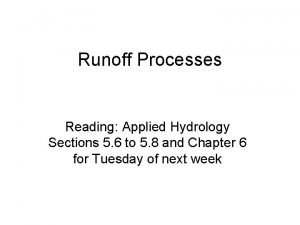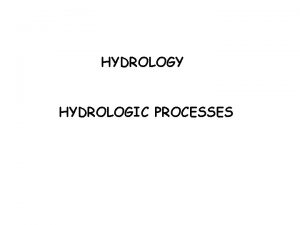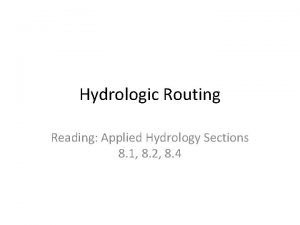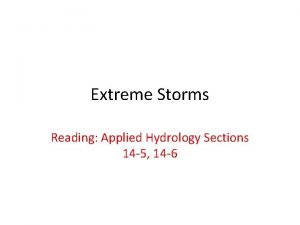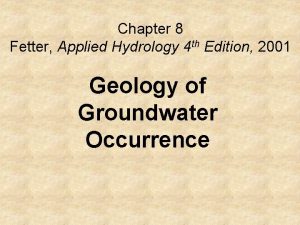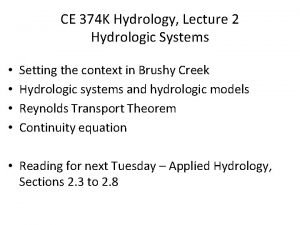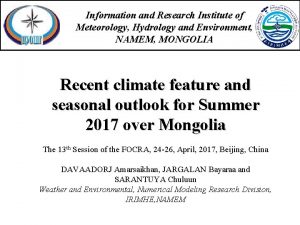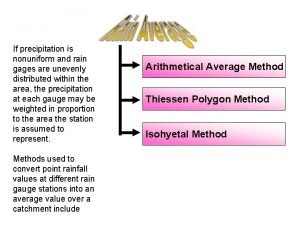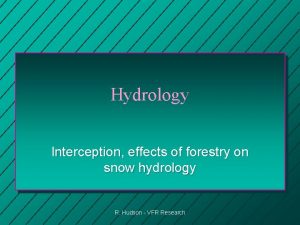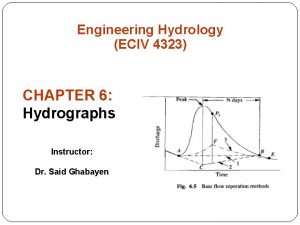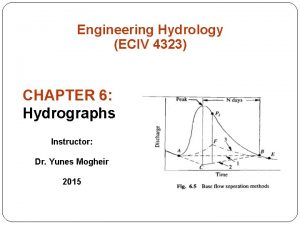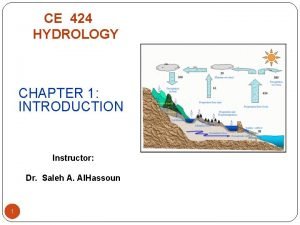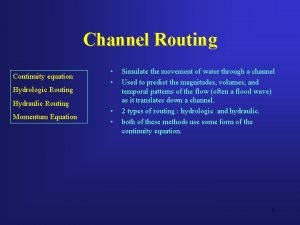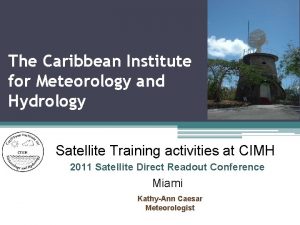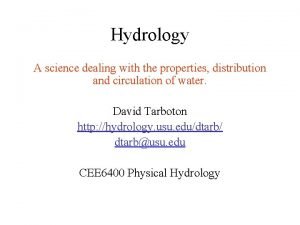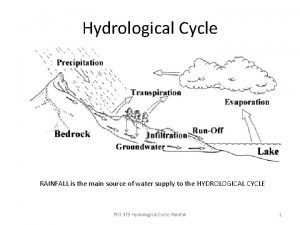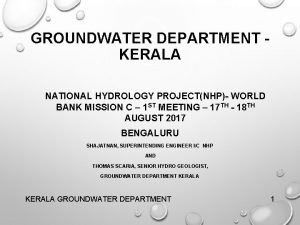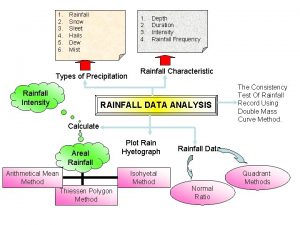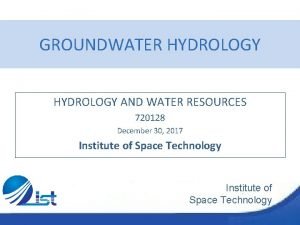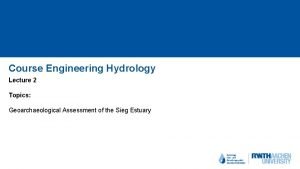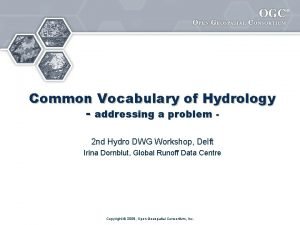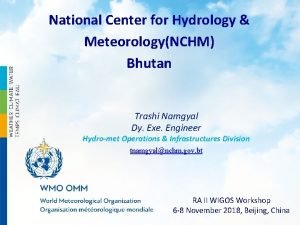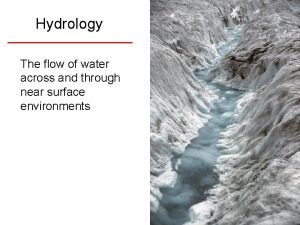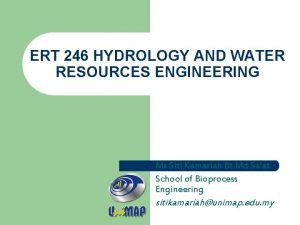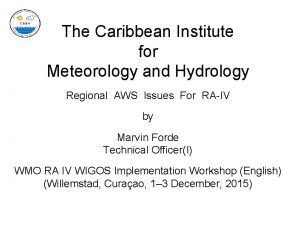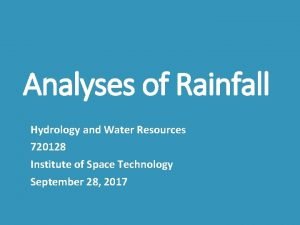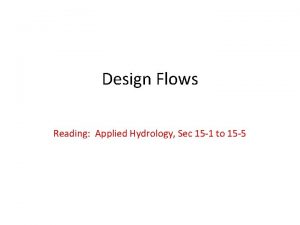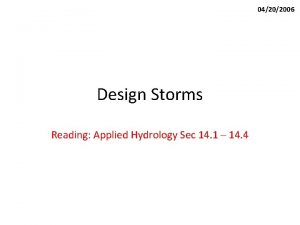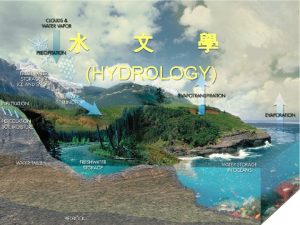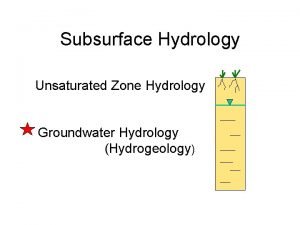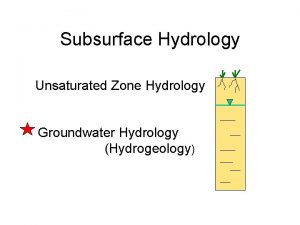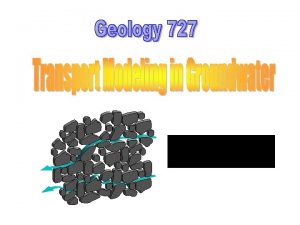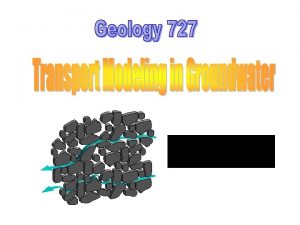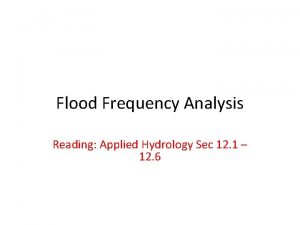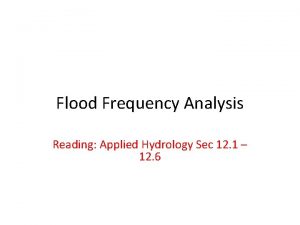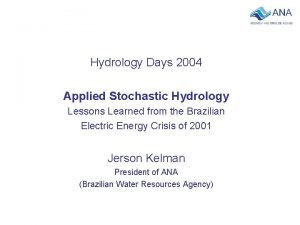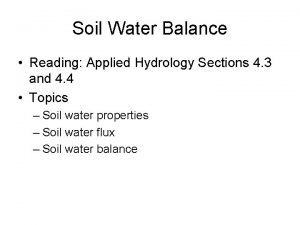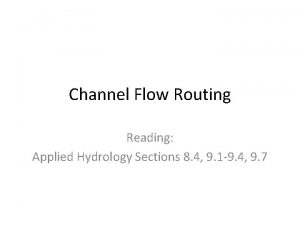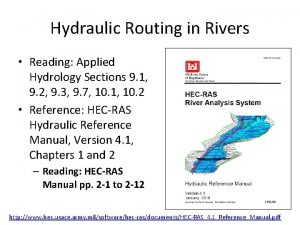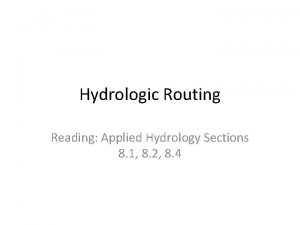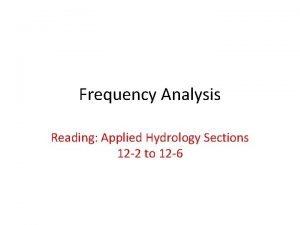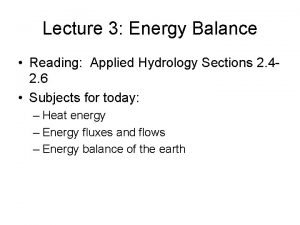Design Flows Reading Applied Hydrology Sec 15 1





































- Slides: 37

Design Flows Reading: Applied Hydrology, Sec 15 -1 to 15 -5

Hydrologic design • For water control – Mitigation of adverse effects of high flows or floods – Design flows for conveyance structures (storm sewers, drainage channels) and regulation structures (detention basins, reservoirs) • For water use – Management of water resources to meet human needs and conservation of natural life – Determination of storage capacity 2

Design flow computations • Methods 1. Rational method 2. Modified Rational Method 3. SCS-TR 55 Method 3

Rational Method • Used to find peak flows for storm sewers – If a rainfall of i intensity begins instantly and continues indefinitely, the rate of runoff will increase until the time of concentration (tc). • Assumptions – Peak runoff rate at the outlet is a function of the average rainfall rate during tc (peak runoff does not result from a more intense storm of shorter duration during which only a portion of the watershed is contributing to the runoff) – tc employed is the time for runoff to flow from the farthest point in the watershed to the inflow point of the sewer being designed – Rainfall intensity is constant throughout the storm duration 4

Rational Formula • The rational formula is given by: Q = peak discharge in cfs which occurs at tc i = rainfall intensity in in/hr (duration used to compute i = tc) A = watershed area in acres C = runoff coefficient (0 ≤C ≤ 1) An urban area consisting of sub-areas with different surface characteristics Composite rational equation j = number of sub-catchments drained by a sewer 5

Runoff Coefficient C • C is the most difficult variable to accurately determine in the rational method • The fraction of rainfall that will produce peak flow depends on: – – – Impervious cover Slope Surface detention Interception Infiltration Antecedent moisture conditions 6

C based on land use 7

C values based on soil groups 8

Rainfall intensity i • i: rainfall rate in in/hr • i is selected based on rainfall duration and return period – duration is equal to the time of concentration, tc – return period varies depending on design standards • tc = sum of inlet time (to) and flow time (tf) in the upstream sewers connected to the outlet Li is the length of the ith pipe along the flow path and Vi is the flow velocity in the pipe. 9

Pipe capacity for storm sewers • Assumption: pipe is flowing full under gravity • Manning or Darcy-Weisbach equation is applicable Manning’s equation Valid for Q in cfs and D in feet. For SI units (Q in m 3/s and D in m), replace 2. 16 with 3. 21. Darcy-Weisbach equation Equation is valid for both SI and English system as long as the units are consistent 10

Example 15. 1. 1 • Given Td =10 min, C = 0. 6, ground elevations at the pipe ends (498. 43 and 495. 55 ft), length = 450 ft, Manning n = 0. 015, i=120 T 0. 175/(Td + 27), compute flow, pipe diameter and flow time in the pipe 11

Example with composite C A Compute tc and peak flow at D for i = 3. 2 in/hr B C D Reach Description of flow C Slope (%) Length (ft) Area (acre) A-B Natural channel 0. 4 1 4. 5 300 8 B-C Natural channel 0. 8 5 3 540 20 C-D Storm drain (n = 0. 015, D = 3 ft) 0. 8 1 1. 2 500 10 12

Solution Compute tc for AB and BC using Kirpich formula in the text (Table 15. 1. 2) For CD, compute velocity by Manning’s equation and tc = length/velocity 13

Modified rational method • Extension of rational method for rainfalls lasting longer than the time of concentration • Can be used to develop hydrographs for storage design, rather than just flood peaks • Can be used for the preliminary design of detention storage for watersheds up to 20 or 30 acres 14

Modified rational method equation • The hydrograph produced by modified rational method is a trapezoid with duration of rising and falling limb equal to tc. • Hydrograph for a basin with tc = 10 min and rainfall duration = 30 min will look like the following: Td = 30 min Q tc 15 tc t

Application of modified rational method • Determine the critical duration (Td) and volume (Vs) for the design storm that will require maximum storage under future developed conditions QA (cfs) is pre-development peak discharge, A is watershed area (acres), C is runoff coefficient, Tp = tc (min), and Td is in min Qp is the future peak discharge associated 16 with Td

Ex. 15. 4. 1 • Rainfall-intensity-duration equation is given as i=96. 6/(Td+13. 9), compute Td for a 25 acre watershed with C = 0. 825. The allowable pre-development discharge is 18 cfs, and tc for pre- and postdevelopment are 40 and 20 min, respectively. A = 96. 6, b = 13. 9, QA = 18 cfs, Tp = 20 min, A = 25 acre, C = 0. 825 Td = 27. 23 min 17

Ex. 15. 4. 2 • Determine the maximum detention storage if g = 2 Detention storage is given by, The volume of runoff after development = Qp*Td = 79, 140 ft 3. Therefore, 53746/79140 = 68% of runoff will be stored in the proposed detention pond. 18

Situational Awareness for Flash Flooding

Emergency Response System (CAPCOG)

ESInet – Emergency Services Internet Network Next Generation 911 Geographic location by coordinates Slide from: John Brosowsky Product Development Director, Geo. Comm

Water Web Services Hub for CAPCOG USGS LCRA COA NWS NDFD

Tropical Storm Hermine, Sept 7 -8, 2010

Local Information during Tropical Storm Hermine (7 -8 Sept 2010) LCRA http: //hydromet. lcra. org Upper Brushy Creek (Round Rock) http: //ubcwcid. org/Overview. aspx? id=1 TV City of Austin http: //coagis 1. ci. austin. tx. us/website/COAViewer_fews/viewer. htm

Internet Communications We are all connected Information Consumers People nformation Producers Media Local Government Federal Government People Media Local Government Federal Government Web services can play an important role in this……

http: //waterservices. usgs. gov/nwis/iv? sites=08158000&period=P 7 D¶meter. Cd=00060

Colorado River at Austin I accessed this Water. ML service at 7: 10 AM http: //waterservices. usgs. gov/nwis/iv? sites=08158000&period=P 7 D¶meter. Cd=00060 And got back these flow data from USGS which are up to 6: 00 AM Central time 27


World United States Texas Austin Home


Observation Data Services • Provide real-time data services – Streamflow, stage, precipitation – Independent of Water. ML version • Feed appropriate models with forcing data – Land-surface models – HMS, RAS

River Channel Data Services • Convey inputs necessary for hydraulic models to run – Connectivity, length, slope, N

River Channel Data Services http: //explorer. arcgis. com/? open=ad 7 c 4 dbe 299 a 458 ca 52 b 9 caa 725 a 2 d 4 d

IBM is collaborating with UT…. …. to help build a Smarter Planet 34

35

Research Question: Can VLSI simulation models…. . be adapted to apply to river networks? 36

Web Services HUB Inputs Outputs Web Services HUB Data Services (Water. ML) USGS Data Services (Water. ML) LCRA COA Mapping Services NWS Mapping Services NDFD Data and Mapping Services Modeling Services Flood Mapping Services Models Maps
 Applied hydrology
Applied hydrology Applied hydrology
Applied hydrology Applied hydrology
Applied hydrology Lumped flow routing
Lumped flow routing Applied hydrology
Applied hydrology Applied hydrology
Applied hydrology Applied hydrology
Applied hydrology Applied hydrology
Applied hydrology Design storm in hydrology
Design storm in hydrology While reading activities
While reading activities Meteorology hydrology and water management
Meteorology hydrology and water management Arithmetic mean rainfall
Arithmetic mean rainfall Hydrology study guide answer key
Hydrology study guide answer key Drh meaning in hydrology
Drh meaning in hydrology Interception hydrology
Interception hydrology The basic assumptions of the unit-hydrograph theory are
The basic assumptions of the unit-hydrograph theory are Drh in hydrology
Drh in hydrology Continuity equation
Continuity equation Qg 424
Qg 424 Bernoulli's equation application
Bernoulli's equation application Branches of hydrology
Branches of hydrology Hydrologic routing and hydraulic routing
Hydrologic routing and hydraulic routing Continuity equation hydraulics
Continuity equation hydraulics Caribbean institute for meteorology and hydrology
Caribbean institute for meteorology and hydrology Hydrology lecture
Hydrology lecture Brutsaert
Brutsaert Quadrant method hydrology
Quadrant method hydrology Hydrology department kerala
Hydrology department kerala Quadrant method hydrology
Quadrant method hydrology بئر ارتوازي
بئر ارتوازي Hydrology
Hydrology International glossary of hydrology
International glossary of hydrology National center for hydrology and meteorology
National center for hydrology and meteorology Return flow in hydrology
Return flow in hydrology What is hydrology
What is hydrology In greek language hudor means *
In greek language hudor means * Caribbean institute for meteorology and hydrology
Caribbean institute for meteorology and hydrology Dad curve hydrology
Dad curve hydrology
